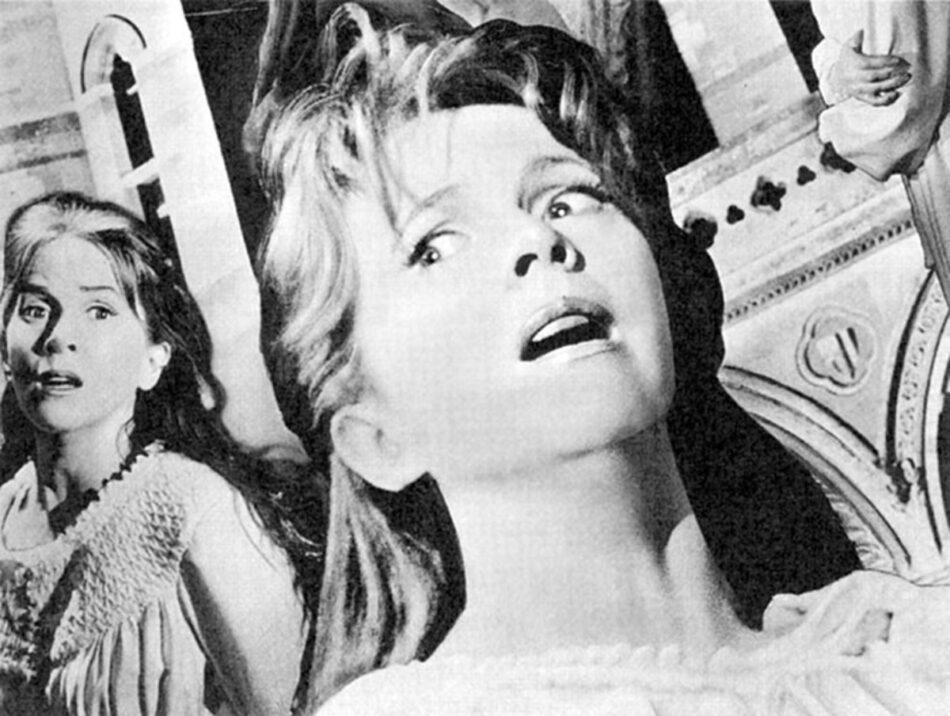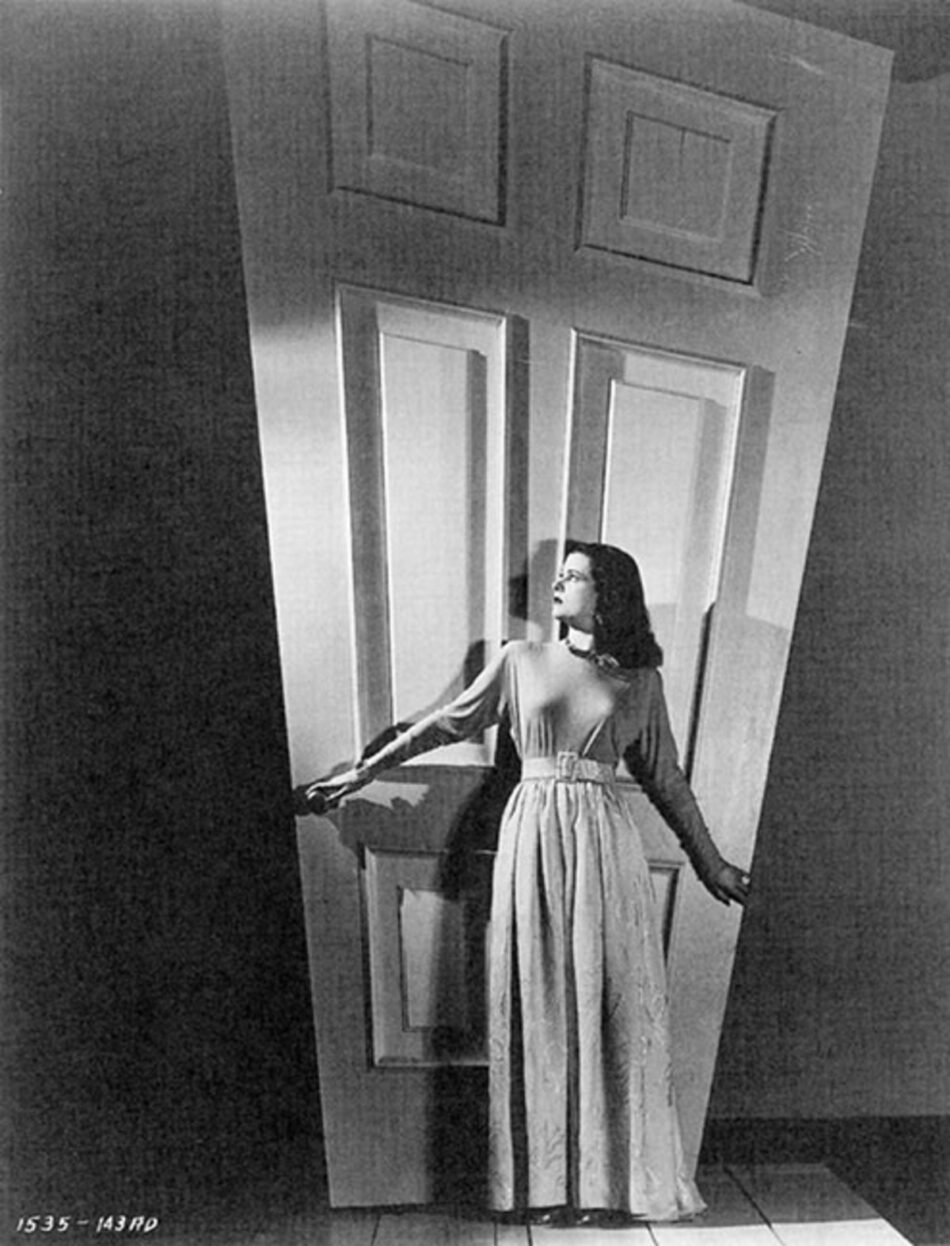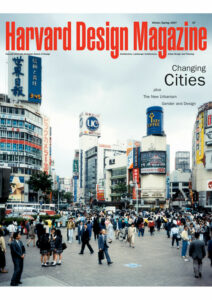Sexuality and Space edited by Beatriz Colomina
In the early 1990s the addition of “sexuality” seemed to take the vibrant debate on space into new territory. The very title of Sexuality and Space reflects this, and as Beatriz Colomina remarks in her brief introduction to the collection of articles it comprises, to insist on “sexuality” as a component of space can be, at one level, to insert feminist concerns into a masculine discourse—although it is dispiriting if sexuality is still perceived as women’s domain, somehow suggesting that anatomy still is destiny and/or that women are still equated with the bodily in a way that men are not. As Colomina makes clear, however, the volume, like the symposium at which the papers it contains were initially presented, aims to do more than simply “include women.” Nor does it aim simply to explore “how sexuality acts itself out in space,” although this would have been an interesting subject in its own right: how actually existing urban, architectural spaces are used intentionally or illicitly for sexual purposes. We could have had papers on the role of the “cottage” (public lavatory) in gay sex, on museums as pick-up grounds for intellectual singles, on the voyeurism of peep shows, and so on. But this would presumably have been too literal a project for the theorists gathered. Instead we are invited to treat architecture as a “system of representation” on a par with film and TV, and to ask how space is “already inscribed in the question of sexuality.” Gender is inscribed in space and space is never designed in a gender-neutral way.
Accordingly, the articles range across the visual arts in a fashion that at first glance seems not so much interdisciplinary as wildly eclectic—Atget photographs of Paris, Alberti’s writings, an Australian advertisement for real estate. The approaches taken by the authors are also widely divergent.
Jennifer Bloomer has missed an opportunity to explore the purported “effeminacy” of Louis Henri Sullivan’s architectural work. She raises the interesting issue of the assumed relationship between gender identity (and/or sexual orientation) and allegedly “feminine” architectural forms and decoration, but instead of developing this theme she flirts with it, creating a theoretical bricolage that fails to achieve intellectual coherence, her discussion of the function and symbolic importance of ornament not fully meshing with the problematic figure of Sullivan. A similar collagist approach is used by Catherine Ingraham, and I can see that it may be a kind of postmodern criticism; but while it permits the introduction of a variety of interesting, if only tenuously related, points and theories, it has a modish feel, especially when the usual theoretical suspects are rounded up for an airing, Lacan’s lavatory doors making repeat appearances. By contrast, Alessandra Ponte’s essay on the 18th-century antiquarian Richard Payne Knight is very focused (as is Molly Nesbit’s meditation on the absence of “la Parisienne” from Atget’s photographs of empty corners of his city), a piece of historiographical excavation revealing the phallocentrism of 18th-century theories of architecture.
Yet most of the articles, despite their apparent divergence of subject, are united by theoretical protocols as well as by the central concern of the book as a whole, which is not eroticism but gender, and not architecture but space in a variety of manifestations, many of them historical. The main uniting factor is psychoanalytic theory.
The material throughout is rich and detailed. Beatriz Colomina contributes an analysis of representations of house designs, particularly interiors, by Adolf Loos and Le Corbusier. She explores the way in which these houses are photographed, and some of the ideas informing them, drawing out the way in which these utopian, perfect rooms are—paradoxically—theatrical sets for dramas of domestic life. There is an implied contradiction between the architect’s dream of perfect space and the actually existing mess of daily life; but either way the woman is always positioned as hidden and within, object of the male gaze. Surprising similarities (or perhaps they are not so surprising) are revealed between these modernist architects and the Renaissance architect and philosopher Leon Battista Alberti. Mark Wigley shows how Alberti, both in his treatise on the family and in his architectural writings, describes the ideal house as a building that encloses, conceals, and ultimately fetishizes heterosexual intercourse; the separate rooms of husband and wife may be entered by a private intercommunicating door, so that other members of the household need never know when the partners engage in sexual relations. More generally the domestic interior becomes, in Alberti’s propositions, a prison house for women, although Wigley suggests that this architectural manifestation of patriarchy only fully came into its own with the 19th-century bourgeoisie.
Patricia White’s paper is concerned with the filmic representation of a house, “Hill House,” as explored in Robert Wise’s 1963 horror classic, The Haunting. As she points out, this film is truly terrifying, but achieves its effects without any special effects or any actual representation of anything horrific. White identifies the underlying horror as arising from the film’s exploration of lesbian sexuality, demonstrating convincingly how the film’s central character, Eleanor, played by Julie Harris, although destroyed by Hill House, whose “gaze” she cannot escape, yet manages to “exceed” the narrative, speaking finally in voice-over from beyond the grave. White’s deployment of psychoanalytic film theory seems particularly apt and nonreductive; she uses it to bring out the ambiguity of the film, in which lesbian desire is apparently defeated and yet remains disruptive, “exceeding the drive of cinema to closure.”


Patricia White inevitably refers in the course of her argument to Laura Mulvey’s well-known article “Visual Pleasure and Narrative Cinema.”1 I have never entirely understood why this article became so hugely influential, given its negative and pessimistic reading (especially from a feminist point of view) of cinematic pleasure. But perhaps that was the point: as this volume itself demonstrates, psychoanalytic theory (especially its Lacanian variant) has been the basis for a “criticism of suspicion,” by which I mean a criticism that not only deconstructs the way in which effects are achieved and exposes meanings that might otherwise be hidden from an “innocent” audience, but invests all aspects of any aesthetic work with doubt and dubiousness. The excavation of cultural products must always, it seems, uncover skeletons. In this regard, architecture and cinema are two forms of cultural production particularly vulnerable to what Martin Jay has termed a 20th-century “denigration of vision” that has supplanted its earlier (Enlightenment) celebration.2 Viewing and the gaze, the totalizing vision and the nobility of sight, have been comprehensively delegitimated as (white, Western) masculine methods of control and domination.
In Laura Mulvey’s original article there was no place for the female spectator to lay claim to the gaze other than by becoming masculinized. Mulvey has since sought to modify this view, while never renouncing the underlying assumptions on which it was based, and she contributes to the present volume a meditation that considers Pandora and her box (“the box can . . . stand as a representation of the enigma and threat generated by the concept of female sexuality in patriarchal culture”), the Hitchcock film Notorious, and the idea of female curiosity as a transgressive exploration of forbidden spaces. For her, psychoanalytic theory as used in feminist criticism is transgressive, for “curiosity describes the desire to know something that is concealed so strongly that it is experienced like a drive, leading to the transgression of a prohibition,” and feminist curiosity then constitutes an unmasking of the patriarchal structures of popular, or indeed any, culture.
Yet, as Victor Burgin argues in his essay on the photography of Helmut Newton, Mulvey’s original article has itself been fetishized; its influence has neither diminished nor evolved. Having made this statement, however, Burgin himself makes little further attempt to develop it, confining himself instead to an analysis of a Newton image, interesting enough, but much narrower in focus than his opening sentence had led this reader, at least, to expect. Burgin is rightly dismissive of the way in which psychoanalytic theory has been “sociologized” and collapsed into a vulgar-Marxist version of woman-as-commodity. He might feel that Lynn Spigel’s essay on television and the postwar American suburban home is too “sociological,” but this is one of the clearest articles in the collection, a model of structural simplicity and accessibility, in which the ambiguity between public and private, outside and inside, created by the plate glass doors and picture windows of the suburban home, is shown to be reproduced by the advent of television with its concomitant notions of the living room as theater and the TV space as a safe, sanitized public space introduced into the home. (Indeed, although television created fears of a new generation of what we now would call “couch potatoes,” the screen community of the sitcom often seemed preferable to the real-life communities of the new suburbs.)
With Elizabeth Grosz’s article on bodies and cities we return to a more euphoric postmodern take on the relationship between sexuality and space. Grosz moves the discussion beyond traditional metaphors of the “body politic” or the humanist idea that at one time people unproblematically built cities; instead she explores the way in which “the city is one of the crucial factors in the social production of (sexed) corporeal bodies: the built environment provides the context . . . for most contemporary . . . forms of the body.” But disappointingly she does not develop this idea, falling back instead on a familiar and arguably exaggerated vision of a cyborg future: “the city and body will interface with the computer, forming part of an information machine in which the body’s limbs and organs will become interchangeable parts with the computer.”
Meaghan Morris’s contribution, too dense and theoretically “over-egged” (i.e., incorporating too many ingredients) to summarize, rewards several readings, and is a serious attempt both at a critique of theories and at an analysis of two specific cultural events concerning property speculation in downtown Sydney. It is insightful and thought provoking; nevertheless it illustrates both the virtues and the flaws not just of the book as a whole, but of the general state of cultural studies. Simultaneously populist and obscure, such studies can become both incoherent and philistine (although the latter is certainly not an adjective I would apply to her essay or any of these contributions).
Indeed, this is a (probably rash) generalization, not a comment on any particular article in Sexuality and Space, but if I have seemed to single out some authors for negative criticism, it is less on account of their specific contributions than because they are the heirs of what for me are ambiguous, indeed dubious, tendencies in contemporary cultural criticism, in which the debunking of Marx and all Enlightenment thought is married (or at least engaged) to a fundamentally uncritical appropriation of Freud (or at least Lacan). I have gone terminally off Lacan since I discovered that, when Antonin Artaud was his patient during World War II, Lacan showed little interest in the deranged playwright3; an illegitimate ad hominem argument, I know—but the grip of his theory on academic critics has always been mysterious to me. Even worse is a practice, which I fear may have been on occasion my own, whereby a critic distances herself ironically or cynically from an assortment of postmodern theorists (Baudrillard, Deleuze and Guattari, even Derrida and Foucault) while simultaneously appropriating their thought, not infrequently in the form of spurious generalizations—a feature, Meaghan Morris suggests, of the work of Deleuze and Guattari themselves in relation to Freud. The whole is then likely to be couched in dauntingly arcane and grammatically tortuous language. Faced with this bricolage, I am totally with Edward Gibbon—who identified one aspect of the decline of the Roman Empire as the decadence of its later literary tradition, when, he complained, “a cloud of critics . . . darkened the face of learning, and the decline of genius was soon followed by the corruption of taste”4—and I cannot but feel that this kind of postmodern criticism is indeed an index of decay.
But I suppose that postmodernism in general and contemporary psychoanalysis in particular is the theory our epoch in history deserves. Psycho-analysis has certainly been reconstructed to fit; in contrast to the highly moralistic and adjustive Freudianism of the 1950s, which was in any case a therapeutic and sociological rather than a critical tool, we have today psychoanalysis as an ideologically empty vessel, a theory without consequences. A fractured body of thought pleasingly open to endless reinterpretations and deconstructions, a detheorized (or perhaps etherealized) theory, it holds up a (splintered, it is true) mirror to assist in the contemplation of ourselves, one which can be thrillingly seen as “transgressive” while remaining devoid of any calls to action or any social or moral imperatives. Truly a theory for our postpolitical times.
Elizabeth Wilson is on the faculty of the School of Information and Communication Studies at the University of North London; her recent books include The Sphinx in the City and Chic Thrills: A Fashion Reader.
